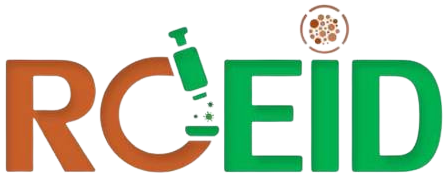Project title: Development of Raman spectroscopy (RS) and Surface Enhanced Raman Scattering (SERS) based test for diagnosis of active tuberculosis and latent tuberculosis infection supporting mass screening in the community.
Granting Agency: Open Philanthropy and Good Ventures Foundation.
Goal:
We are developing the diagnostic tool that can be used for mass screening of tuberculosis in around the world. Based on the well collaborations with the world class researchers, we believe that this goal can be achieved.
Project objectives:
Validated and optimized devices including Raman spectroscopy (RS) and Surface Enhanced Raman Scattering (SERS) for active tuberculosis and latent tuberculosis diagnosis.
Name and affiliation and contact information of research collaborators:
a. Principal Investigators
- Associate Professor Dr. Kiatichai Faksri [KF], Ph.D. (PI)
Department of Microbiology, Faculty of Medicine, Khon Kaen University (KKU), Research and Diagnostic Center for Emerging Infectious Diseases (RCEID), KKU
- Noppadon Nuntawong [NN], Ph.D. (Co-PI)
Photonics Technology Laboratory, National Electronics and Computer Technology (NECTEC), Thailand Science Park, Patumthani, Thailand
b. Co-investigators (key persons)
- Faculty of Medicine, KKU, Khon Kaen:
- Wipa Rechaipichitkul MD.
- Prof. Apichart So-ngern MD, Ph.D.
- Auttawit Sirichoat Ph.D.
- RCEID, KKU, Khon Kaen:
- Benjawan Kaewseekhao Ph.D.
- Miss Chadatan Juntagran
- Jukgarin Eisiri
- Division of TB, Ministry of Public Health:
- Phalin Kamolwat MD.
- NECTEC, Patumthani:
- Mati Horprathum Ph.D.
- Uraiwan Waiwijit Ph.D.
- Pitak Eiamchai Ph.D.
- Saksorm Limwichean Ph.D.
c. International collaborators
- Assistant Professor Bhamla Saad, Mitchell & Gunn Faculty Fellow, School of Chemical & Biomolecular Engineering, Georgia Institute of Technology
- Rajas Poorna: Graduate Research Assistant, Bhamla and Cicerone Labs, Georgia Institute of Technology
- Janet Standeven: Director, Frugal Science Academy, School of Chemical and Biomolecular Engineering, Georgia Institute of Technology
- Charles Anderson: Frugal Science Academy
Rationale, and future goals
Tuberculosis (TB) was found as 10 million active TB (ATB) cases and 1.5 million deaths annually with the estimated of 1.2 trillion latent tuberculosis infections (LTBI) in the global population (1, 2). Word Health Organization proposed the End-TB strategy aiming to reduce the TB prevalence to 10/100,000 population in 2035 (3). To reach that goal, new diagnostic tool, and strategies for the detection of ATB and LTBI are needed.
The current molecular diagnostic method especially GeneXpert MTB/RIF and Line Probe Assays (1) could dramatically reduce the turnaround time for ATB diagnosis compared to conventional culture techniques that need up to 6 weeks for providing the results. To screen for LTBI, the tuberculin skin test (TST), the classical test that has been used for more than 100 years, can be used. However, TST had major disadvantages especially (i) need long turnaround time of TST (2-3 days), (ii) variability of method to measure the induration reaction size that needs 2 days after intradermal injection of M. tuberculosis crude proteins, and (iii) cross-reactivity to Bacillus Calmette Guerin (BCG) vaccine. Then, Interferon Gamma Release Assay (IGRA) has developed to solve these limitations of TST. However, IGRA still has many limitations such as (i) high cost (2,100-4,000 THB), (ii) still needs at least 1-2 days to deliver the result, (iii) Needs laborious methods such as ELISA that is not suitable for use as the Point of care testing (POCT).
Raman spectroscopy (RS) and surface-enhanced Raman scattering (SERS) are relatively new in the TB diagnosis field (4, 5). These techniques are fast and powerful by detecting protein molecular patterns and conformational changes of complex biological molecules. RS/SERS could provide the result within 3 hours and has potential to develop as POCT. This project can be expanded in the future as we intend to produce tools that reduce screening costs, reach more people, are highly effective, and will result in us being able to help society by minimizing tuberculosis through mass screening.
Team meeting and visit

Assistant Professor Bhamla Saad with Georgia Institute of Technology team and Dr. Noppadon Nuntawong with NECTEC team come to visit KKU to share knowledge on technology.

Gorgia Tech Rajas Poorna, Janet Standeven, and Charles Anderson staff come to visit KKU to share knowledge on technology and further collaborative works.
References
1.World Health Organization. Global tuberculosis report 2018. Avilable: https://apps.who.int/iris/bitstream/handle/10665/274453/9789241565646-eng.pdf?sequence=1&isAllowed=y.
2.Organization WH. 2021. 2021 [Available from: https://www.who.int/publications/i/item/9789240037021.
3.Organization WH. The end TB strategy. 2015.
4.Kaewseekhao B, Nuntawong N, Eiamchai P, Roytrakul S, Reechaipichitkul W, Faksri K. Diagnosis of active tuberculosis and latent tuberculosis infection based on Raman spectroscopy and surface-enhanced Raman spectroscopy. Tuberculosis (Edinb). 2020;121:101916.
5.Botta R, Chindaudom P, Eiamchai P, Horprathum M, Limwichean S, Chananonnawathorn C, et al. Tuberculosis determination using SERS and chemometric methods. Tuberculosis. 2018;108:195-200.
